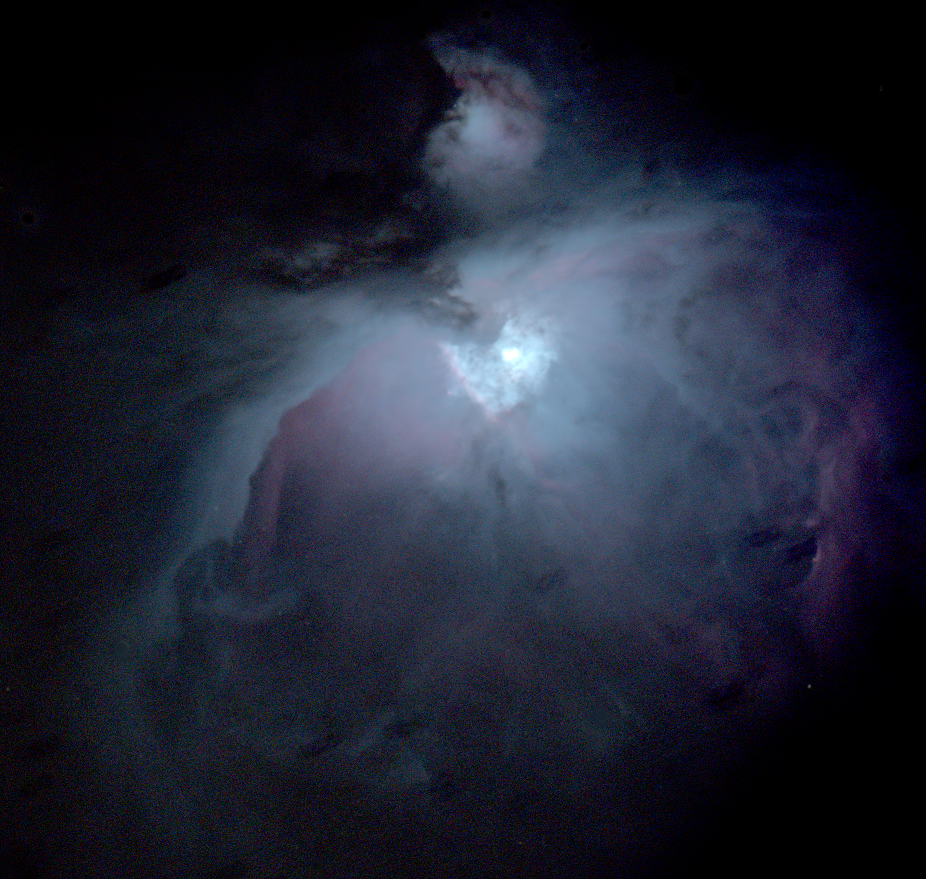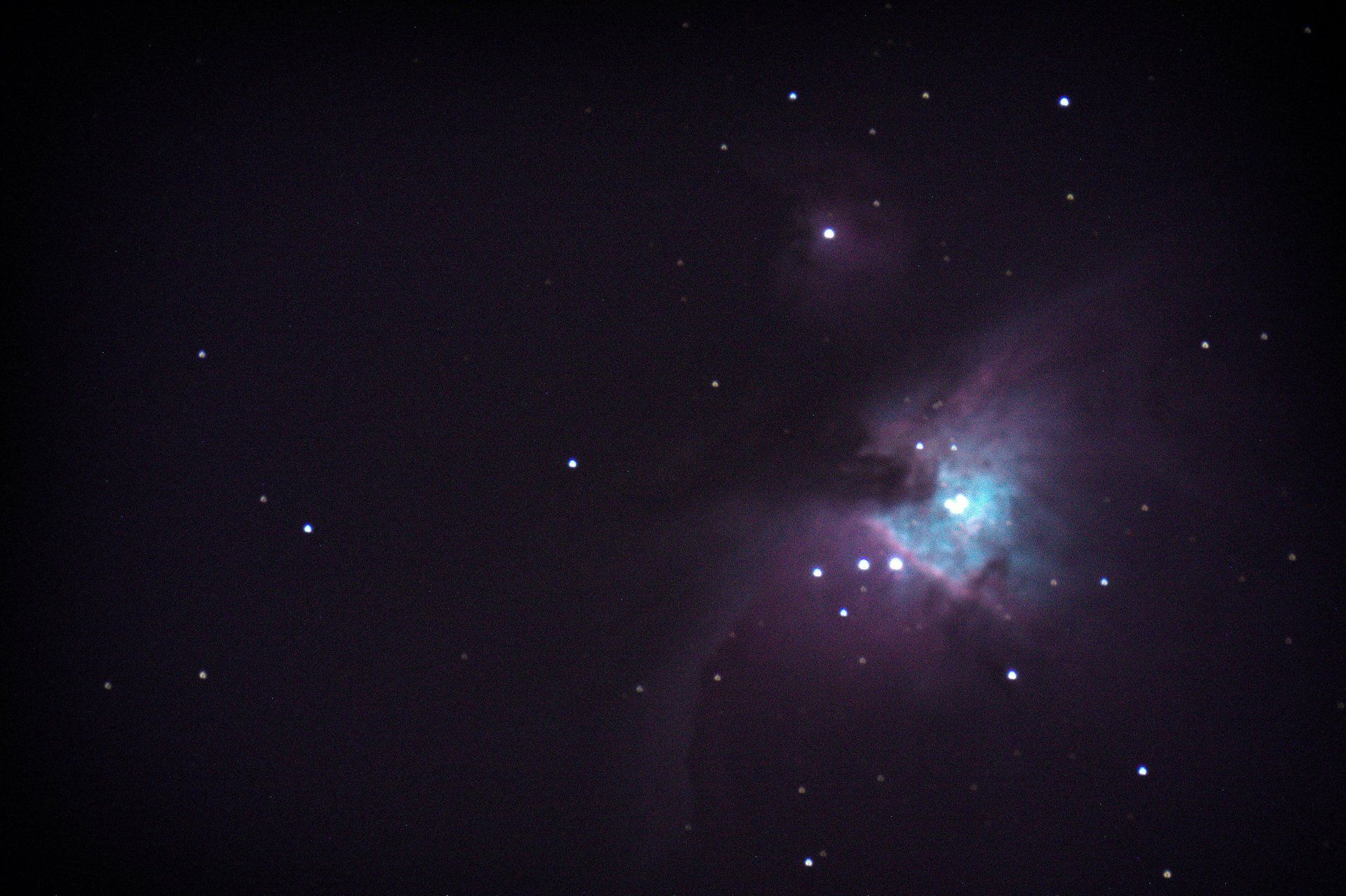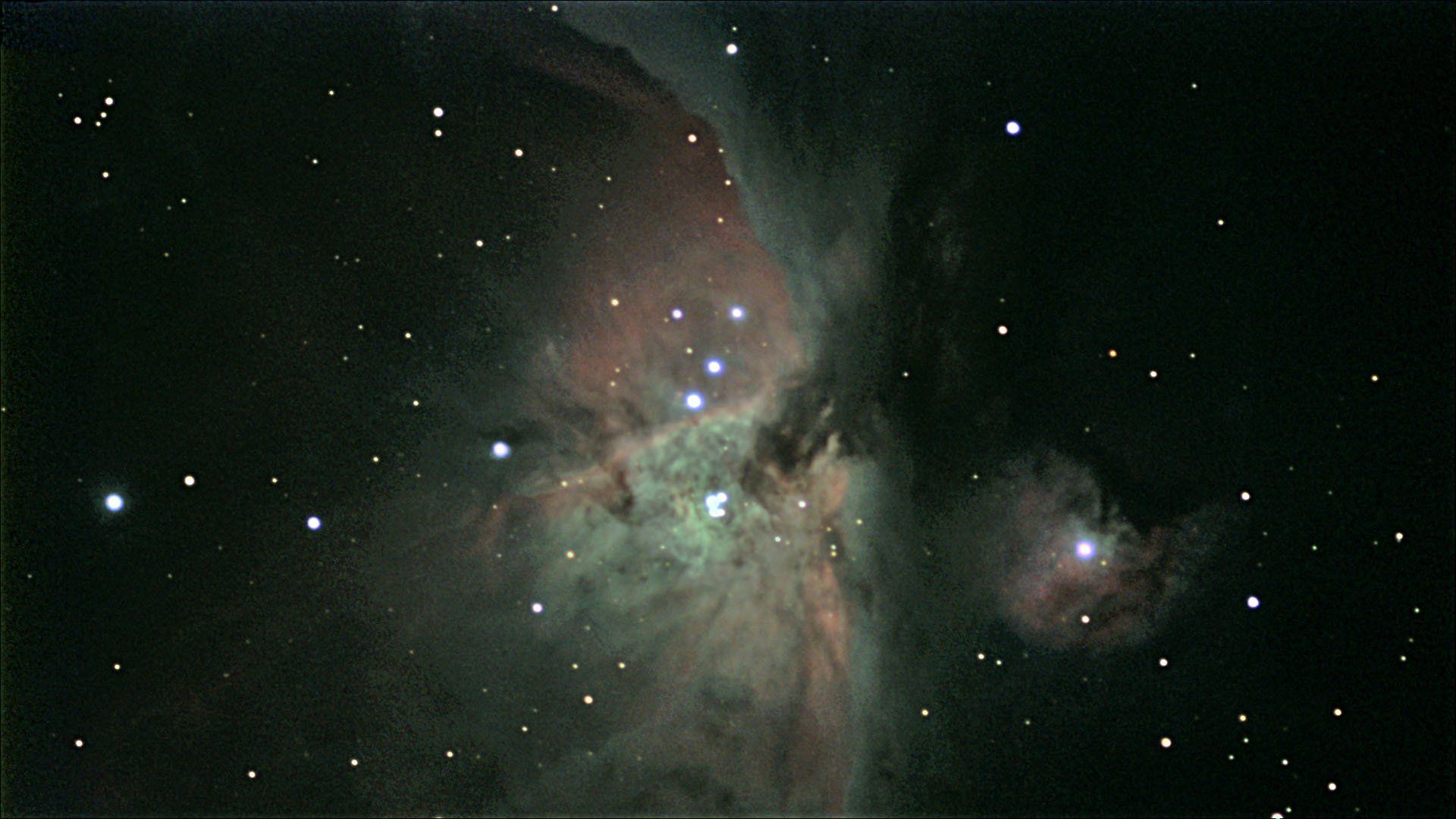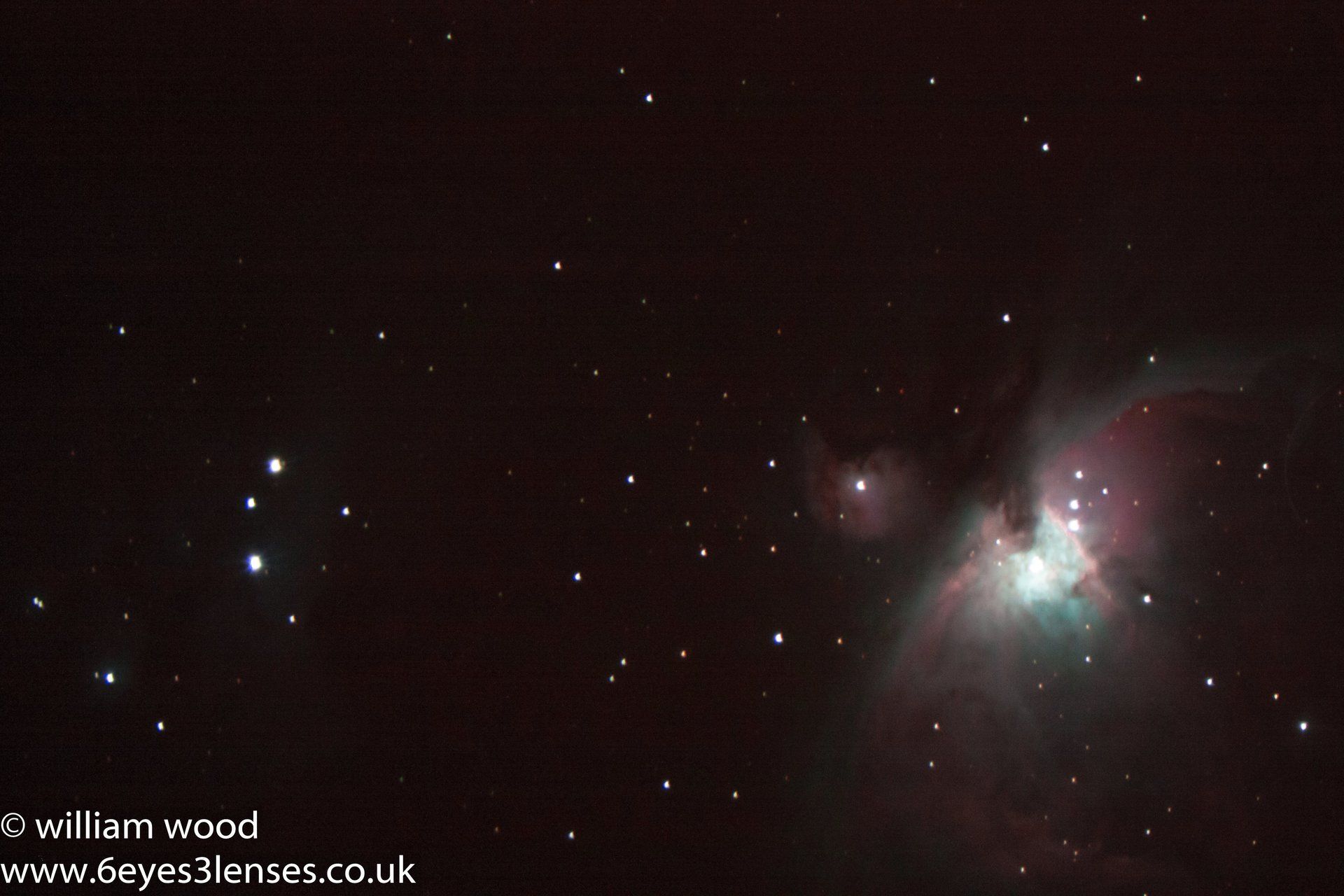M42/43
The Orion Nebula (also known as Messier 42, M42, or NGC 1976) is a diffuse nebula situated in the Milky Way, being south of Orion's Belt in the constellation of Orion. It is one of the brightest nebulae, and is visible to the naked eye in the night sky. M42 is located at a distance of 1,344 ± 20 light years and is the closest region of massive star formation to Earth. The M42 nebula is estimated to be 24 light years across. It has a mass of about 2,000 times that of the Sun. Older texts frequently refer to the Orion Nebula as the Great Nebula in Orion or the Great Orion Nebula.
The Orion Nebula is one of the most scrutinized and photographed objects in the night sky, and is among the most intensely studied celestial features. The nebula has revealed much about the process of how stars and planetary systems are formed from collapsing clouds of gas and dust. Astronomers have directly observed protoplanetary disks, brown dwarfs, intense and turbulent motions of the gas, and the photo-ionizing effects of massive nearby stars in the nebula.
Messier 43 or M43, also known as De Mairan's Nebula and NGC 1982, is a star-forming nebula with a prominent H II region in the equatorial constellation of Orion. It was discovered by the French scientist Jean-Jacques Dortous de Mairan some time before 1731, then catalogued by French astronomer Charles Messier on March 4, 1769. The De Mairan's Nebula is part of the Orion Nebula (Messier 42), being separated from the main nebula by a dense lane of dust known as the northeast dark lane. It is part of the much larger Orion Molecular Cloud Complex.
The main ionizing star in this nebula is HD 37061 (variable star designation NU Ori), which is positioned near the center of the H II region and located 1,300 ± 160 ly (400 ± 50 pc) from the Sun. This is a triple star system with the brighter component being a single-lined spectroscopic binary. The main component is a blue-white hued B-type main-sequence star with a stellar classification of B0.5V or B1V. It has 19±7 times the mass of the Sun and 5.7±0.8 times the Sun's radius. The star is radiating over 26,000 times the Sun's luminosity from its photosphere at an effective temperature of 31,000 K. It is spinning rapidly with a projected rotational velocity of around 200 km/s.
The H II region is a roundish volume of ionized hydrogen centered on HD 37061. It has a diameter of about 4.5′, corresponding to a linear size of 2.1 ly (0.65 pc). The net hydrogen alpha luminosity of this region is (3.0±1.1)×1035 erg s−1; equivalent to 78 L☉. There is a dark lane crossing in front of the region from north to south, known as the M43 dark lane.



















